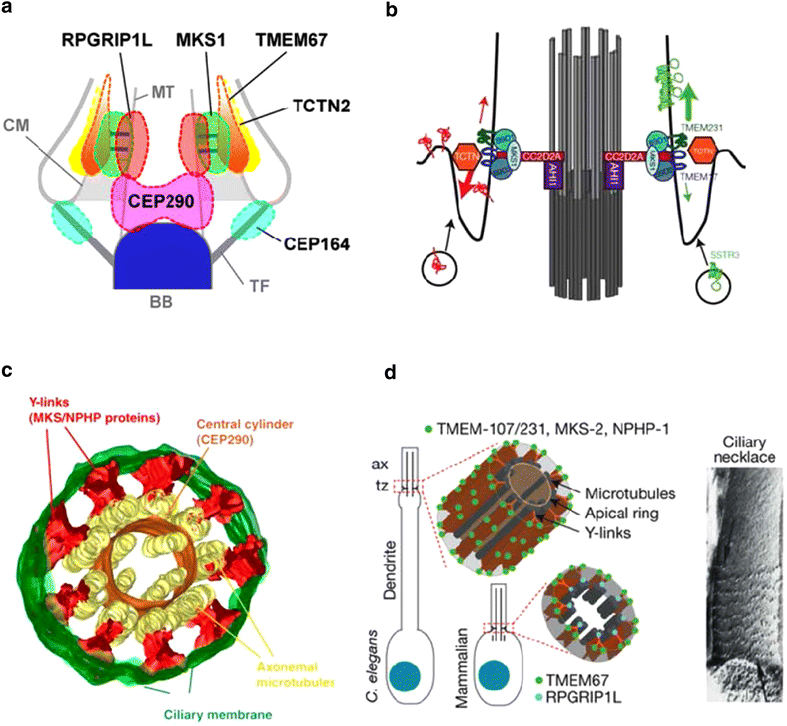CILIA: before and after
- PMID: 28293419
- PMCID: PMC5343305
- DOI: 10.1186/s13630-017-0046-8
CILIA: before and after
Abstract
This is a history of cilia research before and after the discovery of intraflagellar transport (IFT) and the link between primary cilia ciliogenesis and polycystic kidney disease (PKD). Before IFT, ca. the beginning of the new millennium, although sensory and primary cilia were well described, research was largely focused on motile cilia, their structure, movement, and biogenesis. After IFT and the link to PKD, although work on motile cilia has continued to progress, research on primary cilia has exploded, leading to new insights into the role of cilia in cell signaling and development. Genomics, proteomics, and new imaging techniques have unified the field and pointed out the critical role of cilia as a restricted cell organellar compartment, functionally integrated with other cell organelles including the autophagosome and the nucleus.
Keywords: Autophagy; Ciliary motility; Ciliogenesis; Ciliopathies; Intraflagellar transport (IFT); Nucleoporin; Primary cilia; Transition zone.
Figures

Similar articles
-
Intraflagellar transport (IFT) role in ciliary assembly, resorption and signalling.Curr Top Dev Biol. 2008;85:23-61. doi: 10.1016/S0070-2153(08)00802-8. Curr Top Dev Biol. 2008. PMID: 19147001 Review.
-
Drosophila transition fibers are essential for IFT-dependent ciliary elongation but not basal body docking and ciliary budding.Curr Biol. 2023 Feb 27;33(4):727-736.e6. doi: 10.1016/j.cub.2022.12.046. Epub 2023 Jan 19. Curr Biol. 2023. PMID: 36669498
-
Primary cilia-associated protein IFT172 in ciliopathies.Front Cell Dev Biol. 2023 Jan 17;11:1074880. doi: 10.3389/fcell.2023.1074880. eCollection 2023. Front Cell Dev Biol. 2023. PMID: 36733456 Free PMC article. Review.
-
Intraflagellar Transport Complex A Genes Differentially Regulate Cilium Formation and Transition Zone Gating.Curr Biol. 2018 Oct 22;28(20):3279-3287.e2. doi: 10.1016/j.cub.2018.08.017. Epub 2018 Oct 4. Curr Biol. 2018. PMID: 30293716
-
Intraflagellar transport proteins in ciliogenesis of photoreceptor cells.Biol Cell. 2011 Oct 1;103(10):449-66. doi: 10.1042/BC20110034. Biol Cell. 2011. PMID: 21732910
Cited by
-
Chlamydomonas Basal Bodies as Flagella Organizing Centers.Cells. 2018 Jul 17;7(7):79. doi: 10.3390/cells7070079. Cells. 2018. PMID: 30018231 Free PMC article. Review.
-
Analysis of 14-3-3 isoforms expressed in photoreceptors.Exp Eye Res. 2018 May;170:108-116. doi: 10.1016/j.exer.2018.02.022. Epub 2018 Feb 24. Exp Eye Res. 2018. PMID: 29486162 Free PMC article.
-
Distribution of sperm antigen 6 (SPAG6) and 16 (SPAG16) in mouse ciliated and non-ciliated tissues.J Mol Histol. 2019 Jun;50(3):189-202. doi: 10.1007/s10735-019-09817-z. Epub 2019 Mar 25. J Mol Histol. 2019. PMID: 30911868
-
Primary Cilia Reconsidered in the Context of Ciliopathies: Extraciliary and Ciliary Functions of Cilia Proteins Converge on a Polarity theme?Bioessays. 2018 Aug;40(8):e1700132. doi: 10.1002/bies.201700132. Epub 2018 Jun 8. Bioessays. 2018. PMID: 29882973 Free PMC article. Review.
-
Phosphorylation of H3-Thr3 by Haspin Is Required for Primary Cilia Regulation.Int J Mol Sci. 2021 Jul 20;22(14):7753. doi: 10.3390/ijms22147753. Int J Mol Sci. 2021. PMID: 34299370 Free PMC article.
References
-
- Wilson EB. The cell in development and heredity. 3. New York: Macmillan; 1925.
-
- Bloodgood RA. From central to rudimentary to primary: the history of an underappreciated organelle whose time has come. The primary cilium. Methods Cell Biol. 2009;94:3–52. - PubMed
-
- Sleigh MA. The biology of cilia and flagella. New York: Macmillan; 1962.
-
- Porter KR. The submicroscopic morphology of protoplasm. New York: Harvey Society; 1957. - PubMed
Publication types
LinkOut - more resources
Full Text Sources
Other Literature Sources

